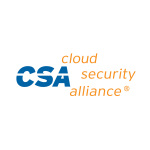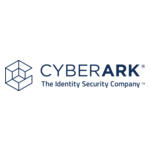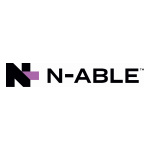
Paper bridges gap between traditional information technology security methodologies and the unique demands of critical infrastructure sectors
New Paper from Cloud Security Alliance Examines Considerations and Application of Zero Trust Principles for Critical Infrastructure
Kristina Rundquist
ZAG Communications for the CSA
kristina@zagcommunications.com
In today's interconnected world, critical infrastructure (CI) sectors face an ever-evolving landscape of cyber and physical threats. As these sectors embrace digital transformation and the convergence of operational technology (OT) and information technology (IT), the need for robust, adaptable security strategies has never been more pressing. Recognizing the distinct challenges and architectures involved in securing these environments, the Cloud Security Alliance (CSA), the world’s leading organization dedicated to defining standards, certifications, and best practices to help ensure a secure enterprise computing environment, today released Zero Trust Guidance for Critical Infrastructure, which examines the critical and nuanced application of Zero Trust (ZT) principles within OT and industrial control systems (ICS).
Developed by CSA’s Zero Trust Working Group, the paper lays out the foundational concepts of Zero Trust and provides a tailored roadmap for implementing these principles effectively in OT/ICS settings. The paper uses CSA’s recommended and repeatable five-step process for Zero Trust: define the protect surface (the area a ZT policy will protect), map operational flows, build a Zero Trust architecture, create Zero Trust policies, and monitor and maintain the network. This process, which was originally outlined in the NSTAC Report to the President on Zero Trust and Trusted Identity Management, represents best practices for approaching Zero Trust projects, and with it, organizations can effectively mitigate risks and enhance the resilience of their CI.
“A Zero Trust strategy is a powerful means of fortifying critical OT/ICS systems against increasingly sophisticated adversaries as it can keep pace with rapid technological advancements and the evolving threat landscape,” said Jennifer Minella, a lead author of the paper and a member of the Zero Trust Working Group leadership team. “It’s our hope this set of guidelines will serve as a useful tool for communication and collaboration between those teams tasked with cybersecurity policies and controls and the system owners and operators of OT and ICS.”
Specifically, the document offers a detailed examination of the inherent differences between traditional IT and OT/ICS systems, focusing on aspects such as network design, device heterogeneity, and specific security requirements. Additionally, it provides a step-by-step implementation guide with actionable insights for each stage of deploying a ZT model in these unique settings. This includes specific guidance on identifying critical assets, mapping data flows, constructing a tailored ZT Architecture (ZTA), policy formulation, and the nuances of continuous monitoring within an OT/ICS context.
“In an environment where security is paramount and also distinctly challenging, Zero Trust is not just a security upgrade but a necessity. By delineating practical strategies and specific methodologies tailored for implementing a Zero Trust strategy into CI environments, we are helping to ensure resilience and security amidst a rapidly evolving digital technology and threat landscape,” said Joshua Woodruff, a lead author of the paper and a member of the Zero Trust Working Group leadership team.
Download the Zero Trust Guidance for Critical Infrastructure.
The Zero Trust Working Group aims to develop Zero Trust standards to achieve consistency for cloud, hybrid, user endpoint, and OT/ICS/IoT environments. The topic of group discourse includes Zero Trust benefits, architecture, automation and maturity models, publication reviews, and relevant industry forums and events. Individuals interested in becoming involved in future research and initiatives are invited to join the working group.
About Cloud Security Alliance
The Cloud Security Alliance (CSA) is the world’s leading organization dedicated to defining and raising awareness of best practices to help ensure a secure cloud computing environment. CSA harnesses the subject matter expertise of industry practitioners, associations, governments, and its corporate and individual members to offer cloud security-specific research, education, training, certification, events, and products. CSA's activities, knowledge, and extensive network benefit the entire community impacted by cloud — from providers and customers to governments, entrepreneurs, and the assurance industry — and provide a forum through which different parties can work together to create and maintain a trusted cloud ecosystem. For further information, visit us at www.cloudsecurityalliance.org, and follow us on Twitter @cloudsa.
View source version on businesswire.com: https://www.businesswire.com/news/home/20241029801843/en/




















